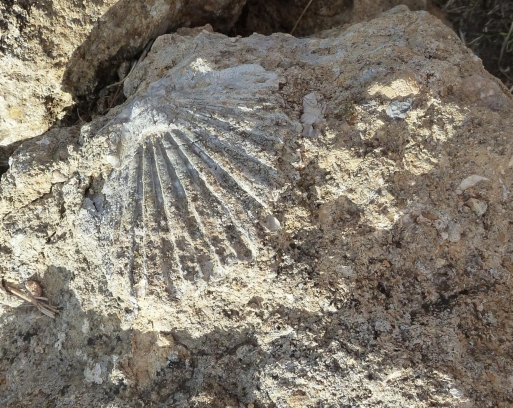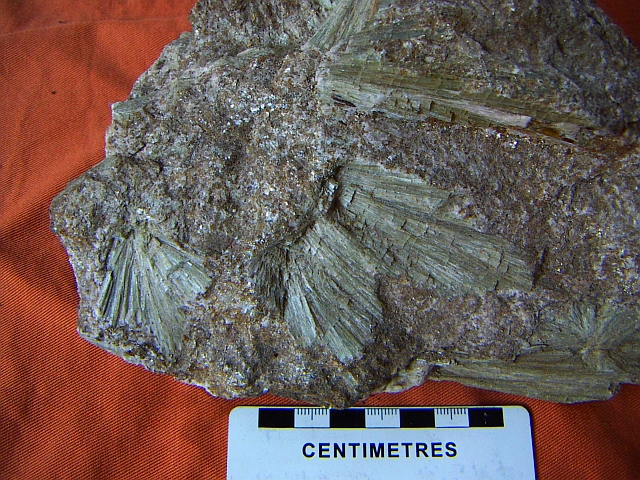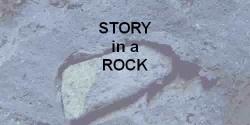Tremolite - from sea shell to needle
Tremolite - from sea shell to needle - my story
The story of a sea shell that metamorphosed into the mineral tremolite

Mt Story
I started my life as a sea shell in a warm ancient shallow sea. When I died my shell joined many others in the ooze at the bottom of the sea.Layers and layers of ooze built up and the weight of the ooze above forced the water out and I slowly turned into a sedimentary rock called limestone.
Time passed and the limestone was pushed up and became land.
Time passed until hot rocks from deep beneath the earth rose up and cooked me at a low temperature. I didn't melt but my crystals grew bigger, denser and needle-like and most visible evidence of my life as a sea shell disappeared.
I became a metamorphic rock.
But I am not gone!
Crystals generally need a nucleus on which to form (like a hailstone needs a speck of dust from which to grow).
Although you can't see my shell anymore, it's edge probably provided the nucleus from which the crystals in the image grew.
If you look closely you can imagine that after all I have gone through, the shape still mimics the outline of my fossil shell long gone!

Scientific explanation:
Tremolite Ca2(Mg,Fe)5Si8O22(OH2) from Quebec CanadaThe contact aureoles produced in siliceous limestones and dolomites, called skarns or calc-silicate rocks, characteristically contain metamorphic amphiboles such as tremolite or actinolite (similar to tremolite by green in colour). The presence of tremolite implies a relatively low grade of metamorphism as tremolite breaks down to form the pyroxene diopside in the presence of calcite and quartz at elevated temperatures. Richterite-winchite occurs in hydrothermally metamorphosed limestones. Magnesium-rich anthophyllites are found along contact zones of granitic dikes intruding ultramafic rocks (those rich in iron and magnesium). Tremolite and Actinolite are members of the asbestos group of minerals.
Tremolite specimen source: Earth Science Australia collection
Learn more about METAMORPHIC ROCKS

